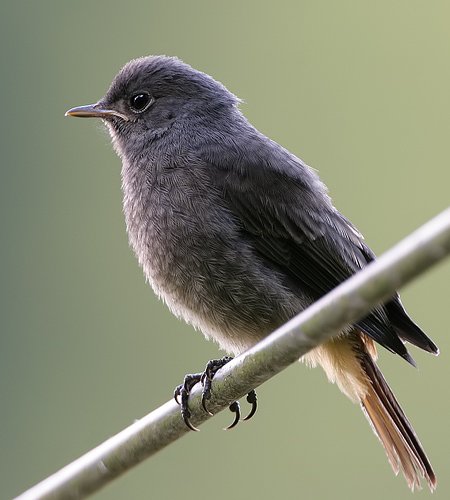Auvergne-Rhône-Alpes

Birding Auvergne-Rhône-Alpes
Auvergne-Rhône-Alpes is a region of France that resulted from the merger of Auvergne and Rhône-Alpes. The new region came into effect on 1 January 2016,. The region covers an area of more than 69,711 km2 (26,916 sq mi), making it the third largest in metropolitan France, with a population of 7,695,264, second only to Île-de-France.The region borders Occitanie and Provence-Alpes-Côte d’Azur to the south, Bourgogne-Franche-Comté to the north, Nouvelle-Aquitaine to the west, Switzerland (Cantons of Geneva, Valais and Vaud) and Italy (Aosta Valley and Piedmont) to the northeast and east.Major cities are Lyon, Saint-Étienne , Grenoble, Clermont-Ferrand and Villeurbanne. A large part of the Auvergne region is covered by the volcanic Massif Central mountain range, which stretches over nearly one-sixth of France’s total area.
In the Rhône-Alpes, water is everywhere: from snow to glacier ice, rivers and streams to lakes…the Rhône-Alpes is where three of France’s biggest lakes can be found (Lake Geneva, Lac du Bourget and Lac d’Annecy). Boasting 8 natural parks and peerless sites such as Mont Blanc and the Gorges de l’Ardèche, the Rhône-Alpes offers a wide range of different landscapes: mountains, vineyards and gentle valleys, fields of lavender and olive groves.
-
Association du Centre de Soins pour Oiseaux Sauvages du Lyonnais
WebsiteOur initial goal seemed simple, it was enough just to recover and heal the wounded or sick wild birds to release them into the wild once restored. We did not yet know what implications would be added to this. -
LPO (Ligue pour la Protection des Oiseaux) - Auvergne
WebsiteThe League for the Protection of Birds Auvergne is one of the major local associations of the LPO in France, association "law of 1901" recognized of public utility, of which the National President is Allain Bougrain-Dubourg. Its aim is the protection of birds, biodiversity and natural environments. To achieve this objective, the LPO Auvergne is carrying out concrete actions in the region thanks to the network of volunteers and its team of employees. The LPO is affiliated with the international organization BIRDLIFE. -
LPO (Ligue pour la Protection des Oiseaux) - Rhône-Alpes
WebsiteThe League for the Protection of Birds Coordination Rhône-Alpes (LPO Rhône-Alpes) is an association law 1901, whose statutory purpose is " to act for the bird, wildlife, nature and man, and fight against the decline of biodiversity, through the knowledge, protection, education and mobilization in Rhône-Alpes region -
LPO Isère
Facebook PageEstablished in 1973, LPO Isère carries out protection and awareness-raising activities in favor of wildlife and natural environments. We seek to know and make discover the biodiversity of our territory to better safeguard it, with the will to mobilize all citizens, elected representatives and public decision makers. Protecting nature must be everyone's business because preserving biodiversity contributes to the well-being of today's citizens and future generations.Founded in 1973, LPO Isère conducts protection and awareness-raising activities for wildlife and natural environments. We seek to know and to discover the biodiversity of our territory to better safeguard it, with the will to mobilize all citizens, elected officials and public decision-makers. Protecting nature must be everyone's business, because preserving biodiversity contributes to the well-being of today's citizens and of future generations.
-
RNP Parc naturel régional de la Chartreuse
InformationSatellite ViewIt is based on the massif de la Chartreuse and covers an area of 76,700 hectares with a population of about 50,000. -
RNP Parc naturel régional des Monts d'Ardèche
WebpageSatellite Viewrom the Rhône valley to the Ardeche mountains, from Les Boutieres in the north, down to the Cevennes, you can travel through the Nature Park in search of medieval fortress remains perched on basalt lava cliffs or picturesque hidden villages nestled in valleys -
RNP Parc naturel régional du Massif des Bauges
WebsiteSatellite View -
RNP Parc naturel régional du Pilat
InformationSatellite ViewThe park spans the departments of Loire and Rhône, and covers a total area of 65,000 hectares (160,000 acres). The mountain terrain ranges from 140 metres (460 ft) to 1,432 metres (4,698 ft) in elevation. -
RNP Parc naturel régional du Vercors
InformationSatellite ViewIt spans two departments, Drôme and Isère, and covers a total area of 135,000 hectares (330,000 acres). The plateau's main elevation reaches 1,000 metres (3,300 ft) while the eastern Alpine mountain ridge tops 2,300 metres (7,500 ft) with Le Grand Veymont (2341m) -
RNP Volcanoes of Auvergne
WebpageSatellite ViewEverything begins with the Tertiary, when the Alps and the Pyrenees sprang up: the vast granite plateau which then covered Auvergne cracked and split. The melted lava flowed from the cracks: in Limagne…
-
2011 [06 June] - David & Amanda Mason - French Alps
ReportFor a number of years our son Nick has tried to tempt us to visit the French Alps in late spring, as he had previously enjoyed several trips to the area. The prospect of seeing Nutcracker, Citril Finch, Rock Partridge and Rock Thrush, together with Wallcreeper, Lammergeier, Snow Finch and Alpine Accentor, whilst spending some time amongst the spring alpine meadows proved to be just too tempting to pass up. -
2011 [09 September] - Bob Shiret - French Alps
ReportIn La Clusaz itself, House Martins, Black Redstart, White Wagtail, Greenfinch and Goldfinch were common, Crag Martins appeared to be nesting on the Church spire in the centre of the village. On the Beauregard Plateau a Nutcracker was seen on two occasions around a small religious statue (St Jaques) at the far end of the plateau. Citril Finch were also here, Green Woodpecker were common and Crested Tit were seen. In the distance (2 miles minimum) a Golden Eagle was seen, a Honey Buzzard passing through the local valley was identified through record pictures and Sparrow hawk and Kestrel were on the plateau…
-
Oiseaux Menacés d'Auvergne (Threatened Birds of Auvergne)
WebpageThe presentation of the status of the different threatened species of Auvergne is organized by natural environments (Standing Waters - Rivers - Agricultural environments - Landes and dry lawns - Forests - Estives - Rocks and cliffs).
